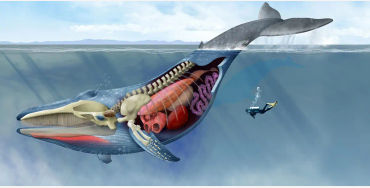
We all know blue whales are massive, but this puts them in a whole new light! Blue whales, the world's biggest creatures, may grow to be 100 feet (30 metres) long and weigh up to 150 tonnes. Their hearts are plainly enormous as well, around the size of a small vehicle. So it's no wonder that a toddler of three or four could easily swim through the huge veins of a blue whale!
Related Quotes


